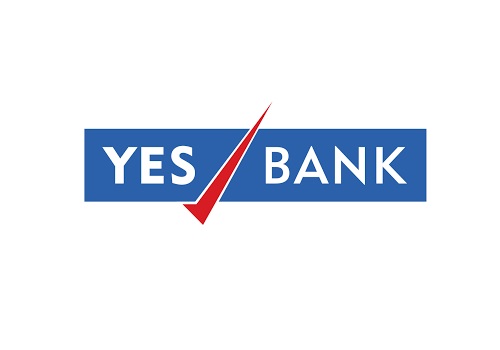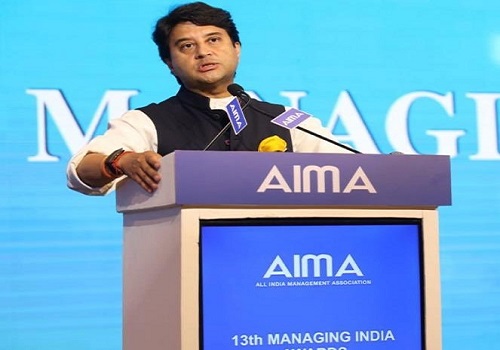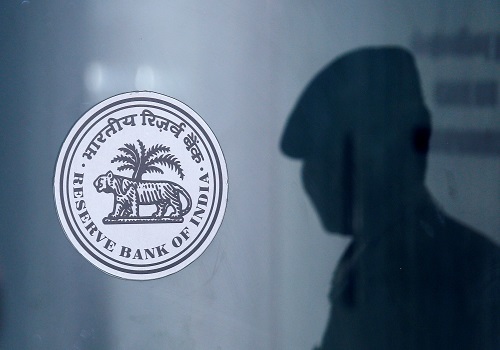MPC shifts to state-based forward guidance, stays pat on rates By Yes Bank

Follow us Now on Telegram ! Get daily 10 - 12 important updates on Business, Finance and Investment. Join our Telegram Channel
MPC shifts to state-based forward guidance, stays pat on rates
The Monetary Policy Committee of the RBI kept policy rates unchanged in the first meeting of FY22, in line with consensus and our expectations. As such, the repo and reverse repo rates continue to remain at 4.00% and 3.35%, respectively. Notably, the RBI tweaked its forward guidance by moving away from a ‘time-based’ to a ‘state-based’ guidance in view of the evolving economic growth and COVID-19 situation on the domestic front.
The MPC maintained that it will continue with the accommodative stance as long as necessary to sustain growth on a durable basis and continue to mitigate the impact of COVID-19 on the economy, while ensuring that inflation remains within the 4% +/- 2% target going forward.
* The accommodative stance as well as the decision to leave the rates unchanged was unanimous with a 6-0 vote.
Key forecasts
Growth: The central bank retained FY22 GDP growth forecast at 10.5%. It further provided quarterly forecasts for this fiscal.
* Q1 FY22 GDP growth expected at 26.2%
* Q2 FY22 GDP growth expected at 8.2%
* Q3 FY22 GDP growth expected at 5.4%, revised downwards from its earlier projection of 6.0%
* Q4 FY22 GDP growth forecast introduced at 6.2%
Inflation: Basis Q4 FY21 forecast provided by the committee, FY21 CPI inflation is expected at 6.2% in FY21 vis-à-vis the earlier expectation of 6.3%. FY22 CPI inflation is expected at 5.0% basis the quarterly projection given by the MPC.
* Q1 & Q2 FY22 CPI inflation expected at 5.2% each
* Q3 FY22 CPI inflation expected at 4.4%, 10 bps higher than the earlier projection
* Q4 FY22 CPI inflation forecast introduced at 5.1%, with risks broadly balanced
Rationale for policy (in)action
* The central bank retained its FY22 GDP growth projection at 10.5% in the backdrop of the ongoing vaccination drive, fiscal stimulus provided by the Union Budget, increased traction around the PLI scheme and improvement in capacity utilization. It however highlighted the dip in consumer confidence due to the recent increase in COVID-19 infections and localized lockdowns, imparting uncertainty to growth outlook.
* The RBI drew comfort on inflation outlook due to bumper Kharif output, strong incoming Rabi harvest arrivals, and increase in imports of certain food products. But it highlighted that the food inflation trajectory in 2021 will be dependent on the temporal and spatial progress of the SW Monsoon. The RBI also cautioned against increase in international commodity prices, and increased logistics costs across manufacturing and services sector. The RBI made a call for reduction of excise duties, cesses and state level taxes on petroleum products.
The RBI set out liquidity guidance and other additional measures to support the financial market and targeted sectors, as well as further financial inclusion.
Liquidity Measures
* Variable Rate Reverse Repo (VRRR): The RBI will conduct VRRR auctions of longer maturity (greater than the current 14D). The amount and tenor of these auctions will be decided based on the evolving liquidity and financial conditions. Notably, the RBI maintained that this is a part of RBI’s liquidity management operations and should not be read as liquidity tightening.
* G-Sec acquisition programme (G-SAP 1.0): The RBI committed upfront to purchase G-Secs of INR 1 lakh crore in Q1 FY22 under G-SAP 1.0. The first purchase of G-Secs of INR 25000 crore will be conducted on Apr 15, 2021. Alongside, the RBI will continue to deploy the regular operations under the LAF, longer-term repo/reverse repo auctions, forex operations and open market operations including special OMOs.
* On-tap TLTROs – Extension of Deadline: The deadline for on Tap TLTRO Scheme is being extended by a period of six months i.e., up to Sep 30, 2021 from Mar 31, 2021.
* Liquidity Facility for All India Financial Institutions (AIFIs): In FY22 liquidity support of INR 25000 crore will be provided to NABARD, INR 10000 crore to NHB, and INR 15000 crore to SIDBI for fresh lending.
Key Additional Measures
* Enhancement of Limit of Maximum Balance for Payments Banks: The current limit on maximum end of day balance with a payments bank is being increased to INR 2 lakh from INR 1 lakh per individual customer with immediate effect.
* Asset Reconstruction Companies – Constitution of a Committee: The RBI has proposed to constitute a committee to undertake a comprehensive review of the working of ARCs and recommend measures to enable these entities to meet the growing requirements of the financial sector.
* Permitting Banks to On-lend through NBFCs: Bank lending to registered NBFCs (other than MFIs) for on-lending to Agriculture, MSME and Housing was permitted to be classified as Priority Sector lending. This dispensation which was available till Mar 31, 2021 is being extended for another six months up to Sep 30, 2021.
* Priority Sector Lending (PSL) - Enhancement of Loan Limit against eNWR/NWR: It has been decided to enhance the loan limit under priority sector lending from INR 50 lakh to INR 75 lakh per borrower against the pledge of agricultural produce backed by Negotiable Warehouse Receipts (NWRs)/electronic-NWRs (e-NWRs) issued by warehouses registered with the Warehousing Development and Regulatory Authority (WDRA).
* Relaxation in the Period of Parking of External Commercial Borrowing (ECB) Proceeds in Term Deposits: It has been decided to permit parking of unutilized ECB proceeds drawn down on or before Mar 1, 2020 in term deposits with AD Category-I banks in India prospectively up to Mar 1, 2022. This was earlier permitted for a maximum period of 12 months.
* WMA limit for States/UTs: The RBI has decided to enhance the aggregate WMA limit of states/UTs to INR 47010 crore, an increase of 46%, from the current limit of INR 32225 crore. Further, it has also been decided to continue the enhanced interim WMA limit of INR 51560 crore granted by RBI for an additional 6 months, i.e., up to Sep 30, 2021.
Our take
The RBI resounded its dovish stance by keeping key rates unchanged and tweaking its forward guidance amidst increase in COVID-19 infections in certain states that have resulted in localized lockdowns. The shift to ‘state-based’ from a ‘time-based’ approach of forward guidance is apt in view of the gnawing uncertainty in domestic growth conditions.
Despite which the RBI maintained a balanced approach with respect to growth outlook by keeping the full year growth forecast unchanged. Any changes to the FY22 growth forecast will be data-dependent and basis the pace of vaccinations, fresh case loads, and extension of localized lockdowns beyond the initial deadlines. On inflation front, the RBI raised concerns around cost push price pressures due to increase in global commodity prices. It once again called for coordinated policy actions by Centre and States to mitigate the increase in domestic input costs.
With the RBI maneuvering through multiple challenges such as a) ensuring growth durability amidst the second wave of COVID-19 infections, b) maintaining inflation within target band, c) ensuring orderly evolution of yield curve and prevalence of adequate systemic liquidity, d) currency stability amidst global financial market volatility, and e) ensuring a buoyant bond market for large scale central government borrowing programme, it has struck the right balance in its policy-mix.
By introducing the G-SAP programme, it has indicated to absorb INR 1 lakh crore of G-sec in Q1 FY22 from a net amount of INR 2.42 lakh crore, as outlined in the recently released market borrowing calendar for H1 FY22 (for details, refer - H1 FY22 government borrowing calendar on expected lines, dated 31 March, 2021). This has been received positively by the market with the 10Y benchmark yield correcting by as much as ~7 bps post announcement to an intra-day low of 6.05%. As such, we expect the 10Y benchmark G-sec yield to trade between 6.10-6.25% in the near term, while approaching 6.50% level by Mar-22. The global risk aversion sentiment amidst rise in UST yields is an imminent risk to the trajectory of India’s bond yield movement along with further hardening of global oil prices and unwarranted increase in core price pressures. Meanwhile, our base case if for the RBI to stay on hold in FY22 so as to ensure growth durability.
Above views are of the author and not of the website kindly read disclaimer





.jpg)




Tag News

Monthly Debt Market Update, September 2023: CareEdge Ratings













